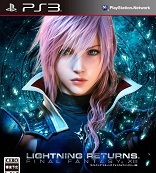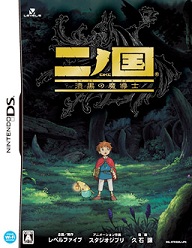Fable II
Xbox 360
Reviewed: 11/5/09
Fable II is a sequel to a game which the reviewer has not played and therefore cannot draw many comparisons to. However, Fable II stands on its own very well as an action RPG more concerned with the action than with the RPG, but an RPG in every right nonetheless.
The game’s story is as simple as it is short. The player’s character and sister are orphans in the city of Bowerstone, dreaming the impossible dream of living in Fairfax Castle — a desireable alternative to starving or dying of exposure in the streets. The two come across a street vendor selling a music box which grants wishes, and a blind woman goads the sister into buying it, which requires doing some chores. The chores themselves introduce an element of the game seen in many other RPGs: the alignment system. Players can be good or evil, and corrupt or pure. More on that later, but depending on whether you’re a goody two shoes, or an evil brat, the town will change later in the game. Upon performing the chores and getting enough money to buy the music box, you and your sister make a wish to go to Fairfax castle. Nothing happens, and both kids go to sleep in a little shack, cold and disappointed. But wait! In the middle of the night, the castle’s lord invites the orphans into his castle! Wishes do come true! And then Lucien, the lord of the castle, murders your sister and throws you out the window.
About a decade later, the real game begins, and the whole time the player is trying to hunt down and stop Lucien from building this evil tower which is apparently both evil and a tower.
 |
| Heeeey, I don’t remember these guys in the movie I grew up with… |
The story isn’t truly ambitious, but that might be the point. Fables by nature are not complex stories; they’re fairy tales that are out to teach a lesson. Although Fable II‘s ultimate lesson is dubious at best, it does manage to be a lot of fun. NPCs the player meets may be static and flat, but their dialogue is usually well written and entertaining. Its setting does well by being atmospheric, although it never takes itself too seriously. Plot simplicity and the flatness of the main characters may, however, turn off a lot of players who are attracted by those aspects of the games, so this should be noted again.
Fable II‘s graphics are decent. This is a 360 game from 2008; they are good on an HDTV, and decent enough on a regular TV. The colors are very vivid in the area around Bower Lake, Bowerstone, and Oakwood, although it tends to get rather gray and brown in some other areas. The cartoony style of the art can be kind of bothersome, and there is actually very little variety between the different citizens of the towns. One may run into as many as six or seven people that look exactly the same, which is no longer excusable in this generation.
Voice acting in this game, for the most part, is great in a comical way. The townspeople all have funny lines recorded and they’re acted competently. All of the main characters sound good, too. The problem, again, lies in repetition. Townspeople have only a dozen or so lines recorded, so it all starts repeating after a mere three hours into the game. Different towns have different types of citizens, though, so something fresh is available in pretty much every new town, but it all starts the cycle anew.
 |
| Players can mark the street signs, which is necessary because so many of the game’s straight, narrow paths look exactly the same. |
The combat tends toward the simpler side of action. Swing a sword, shoot a gun, and cast spells. Experience is gained through killing things, and players use experience as the currency to buy stat upgrades, new skills, and spells. Although players can pick and choose what they learn, there is no skill tree; progression is as linear as can be. If one wants to be a good fighter, he’ll build up the Physique stat and Brutal Styles. But eventually, one will end up building Skill and Magic anyway, just because there’ll be no more upgrades. The system works, but eventually players just end up with a tall, glowing muscle man no matter how the beginning is handled. Fable II also has absolutely no challenge. Seriously, this is one of the easiest ever made. One will absolutely never be stuck in a boss fight because there is only a negligible penalty for dying. Once the character’s HP runs out, all the EXP that the enemies dropped during the fight vanishes, and one has a chance of getting a scar somewhere on the charcter’s body. The hero is reborn in the exact same spot, with full HP. The experience is really easy to gain back, and the scar only slightly decreases the “attractiveness” rating.
That said, it’s still a lot of fun to beat the crap out of things, to the point of being addictive.
The socializing aspect is what really makes this a “role playing game” in the older sense of the term. One can meet townspeople, be nice to them, or be a dick. One can marry them and have babies. One can be gay or straight or bi or asexual. Townspeople can be impressed with dances and puppet shows, and one can turn right around and piss them off by laughing at them and having the hero’s dog piss on them. What’s the point of all of this? Next to none. It is simply fun and it lets one develop who the character is.
 |
| This starts out fun for a while, but…. |
The game also has an interesting economic system with fluctuating prices and store inventories, and it very much encourages players to become a real estate mogul. This is where purity and corruption come in, which are independent of good and evil. When one buys a shack or a house, the game lets him set a rent for it so you can have income from it. Setting it too high makes one corrupt, and setting it low makes one pure. Ultimately, outside of appearance and the semi-useless attractiveness score, it affects very little. But one could grow horns if he’s corrupt and evil, or have a halo if he’s pure and good, or have flies surround you and look sickly when corrupt and good.
Fable II is a fun game despite its flaws. It has an extremely shallow story and it provides next to no challenge. However, the writing is entertaining, the combat is fun, especially with the occasional challenge provided in the quests with time limits. The voice acting tends to get repetitive, and there is very little variety when it comes to the appearances of the NPCs. There really isn’t a whole lot of replay value other than replaying to be a total dick or a saint. It seems that there are a few DLCs available for the game, though, so that may extend its longevity a bit, though the extent of that is yet unknown. But flaws aplenty, Fable II is still good.
-Ivan Taran
| Score Breakdown | ||
| Overall Good Out of 10 See our Review Criteria |
Gameplay | Great |
| Story | Average | |
| Graphics | Good | |
| Sound/Music | Good | |
| Replay Value | Below Average | |
| The Verdict: Six | ||









